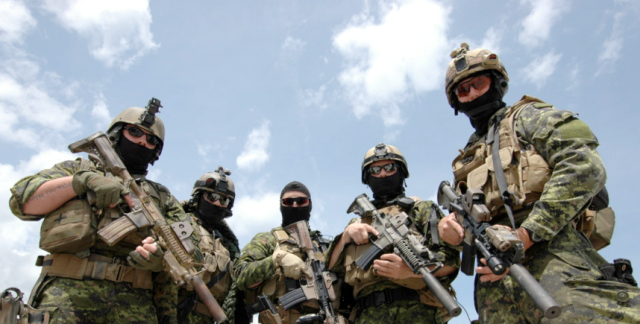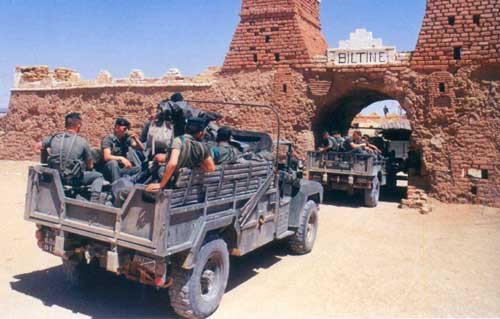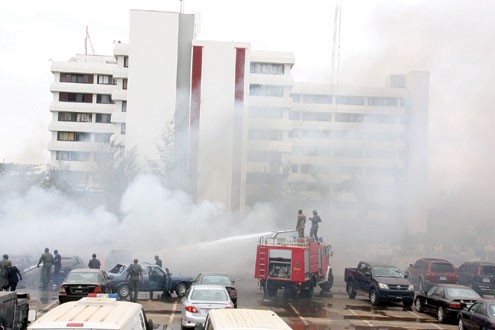Andrew McGregor
July 28, 2011
The Jamestown Foundation recently posed a series of questions in an online interview with Abdurahman M. Abdullahi (Baadiyow), an Islamic scholar and prominent leader of the Islah (Reform) movement in Somalia. The interview was designed to shed light on the views of Somalia’s Muslim Brotherhood (under the banner of the Islah movement and the incipient Justice and Unity Party) on a number of the political, religious and social issues facing Somalia today. Among the topics discussed are the political activities of the Muslim Brotherhood, the future of the embattled Transitional Federal Government, the influence of al-Qaeda on Somalia’s al-Shabaab movement, the introduction of Salafism to Somalia, the effect of American intervention in Somalia, the possibility of a popular uprising in the style of the “Arab Spring” and the roots of Islamic resistance in Somalia in the Dervish movement of Sayid Mohamed Abdulla h Hassan. [1]

Abdurahman M. Abdullahi (Baadiyow)
[Jamestown Foundation] Somalia’s Islah Movement is often described as Somalia’s Muslim Brotherhood. How close is Islah to the ideology of Hassan al-Banna and the Egyptian Ikhwan? Does Islah maintain contacts with the international Muslim Brotherhood?
[Abdurahman M. Abdullahi] Islah describes itself as an Islamic movement representing the Muslim Brotherhood in Somalia. It takes inspiration and understanding of Islam from the ideological guidelines laid down by Hassan al-Banna, the founder of the Egyptian Muslim Brotherhood in 1928. Its vision is based on looking Islam as a comprehensive way of life and a religion that, besides calling for worshipping one God (Allah), calls for adopting Islamic principles and values in the social, political and economic spheres. The Islah Movement is part of the international network of Muslim Brotherhood organizations. These organizations are independent entities that are united in their peaceful and gradual approach in reforming their societies and promoting the concept of the universality of Islam and its peaceful coexistence with other worldly regions. The international network of the Muslim Brotherhood plays a consultative role and is a forum to exchange ideas and share experiences among its members.
Can you describe the platform and goals of your new political formation, the Justice and Unity Party?
For the Somali state to recover, a pan-clan national civic movement is required that surpasses clan based organizations, a movement that invigorates the concepts of citizenship and democratic governance on the one side and accommodates Islam and the clan system in a new social contract on the other. Only through a national movement with multiple persuasions and organizations united in the strategic goal of restoring the Somali state and tolerance to each other, will capable and qualified leadership emerge and the state recover.
The Justice and Unity party is a new initiative of the Islah Movement which aims to mobilize Somali society through a national political party. The founders of the party will not be limited to the members of Islah, but will include many prominent personalities, both men and women. This party is in the process of formation and will be announced publicly when all the required steps are completed. It adopts the general guidelines and principles of Islamic moderation, consultation (shura), and democracy. Its main principles include safeguarding the dignity of all citizens, protecting universal human rights and realizing justice and unity in the war-torn Somalia. It also advocates and promotes peace and cooperation in particular amongst the peoples of the Horn of Africa. Moreover, it strives to transform Somali society from clan based partisan politics to a modern society where political affiliation and ideology plays a role in political competitions. Membership of the party will be open equally for all Somalis who are willing to join and adhere to its principles and policies. More details of this party and its leadership will be published after its public announcement.
The Islah Movement welcomed the decision of the Transitional Federal Government (TFG) cabinet to implement Shari’a as Somalia’s new official legal code in 2009. Two years on, how would you assess the success of this change? Why do you think al-Shabaab, which demands Shari’a in Somalia, continues to reject the TFG’s effort to impose Shari’a?
Even though the Islah Movement welcomed this decision, it was well aware that the TFG cannot implement Shari’a because it is very corrupt and weak. Moreover, it is our understanding that implementing Shari’a should not be equated with the application of some elements of hudud (criminal punishments) for offenses such as theft, fornication and the consumption of harmful drugs. Application of Shari’a is very wide concept and instead of focusing on the doable parts of Shari’a such as mercifulness, cooperation, caring for the weak, respecting other religions and good governance based on consultation (shura) or democracy, extremist elements focus on the punishment aspects of Shari’a. Welcoming the TFG’s decision was meant to support the right direction in accordance with Islah ideology. On the other hand, even though al-Shabaab calls for the application of Shari’a, their understanding of Islam is a distorted, extremist approach departing from Islamic moderation and the gradual, transformational approach. They want to apply Islam violently without any legitimacy. The only Shari’a they can accept is their way of Shari’a under their absolute leadership.
Al-Qaeda is often claimed to play an important part in the al-Shabaab insurgency. How would you assess al-Qaeda’s influence on the Islamist movement in Somalia?
First, let me address the wrong usage of the terminology “Islamist movemen”t to describe al-Shabaab. Islamist movements are not monolithic and include various organizations promoting, teaching, advocating for the application of Islamic principles and adhering to its values in the society and the state. Al-Qaeda and al-Shabaab – its offshoot in Somalia – do not represent the Islamic movement and in doing so distorts the image of all Islamic movements. They could be described simply as armed Islamic movements. Historically, direct al-Qaeda involvement in Somalia started in 1991 when its members infiltrated the al-Itihad al-Islamiya movement in the early years of the civil war. Osama bin Laden during his stay in Sudan [1992-96] was interested in creating an al-Qaeda affiliated organization in Somalia and pushed al-Itihad, which was a neo-Salafist movement, towards armed conflict. However, when the leaders of al-Itihad abandoned armed struggle, a splinter group under the name of al-Shabaab appeared on the scene after al-Qaeda’s 9/11 attack on U.S. targets. Al-Shabaab today is a formidable force and controls large swathes of southern Somalia though their ideological influence is dwindling.
Al-Shabaab’s destruction of Sufi shrines and tombs has led to the formation of a Sufi-based armed movement. How would you assess the role of Ahl al-Sunna wa’l-Jama’a in Somalia?
Ahl al-Sunna wa’l-Jama’a is a new name which means “Sufi brotherhoods in Somalia” even though the name originally covered all Sunni branches of Islam and only excluded the Shi’a and a number of other sects. Armed Sufis are not a new phenomenon in Somalia; a similar situation occurred during the first two decades of the 20th century when the Dervish movement under the leadership of Sayid Mohamed Abdullah Hassan led the armed Salihiyah Brotherhood against Britain and Ethiopia. Moreover, this movement also fought the Qadiriyah and Dandarawiyah brotherhoods that refused to accept the leadership of Sayid Mohamed. The new armed role of Ahl al-Sunna wa’l-Jama’a is a reaction to Shabaab’s destruction of the revered shrines. It will have serious consequence on the traditional peaceful approach of the Sufi brotherhoods even as they encounter spreading Wahhabism in Somalia.
The mandate of the Transitional Federal Government is about to expire. Do you view the attempt to renew this mandate as legitimate?
The original mandate of the TFG expires in August 2011, however, it was extended for an extra year in order to be able to complete transitional tasks such as adopting a new constitution, forming a new, smaller parliament, electing a president and forming a new government. Constitutionally, the extension is considered illegitimate; nevertheless, there is no alternative way for national institutions to be renewed. The unpopular agreement arrived at in Kampala under the leadership of the Ugandan president [the June 9 Kampala Accord] was finally approved by the parliament and a new government was formed under the leadership of a Somali-American professor [new Prime Minister Dr.Abdiweli Mohamed Ali]. Let us hope that things will change for the better during the next year.
Do you believe the TFG has the potential or ability to restore a functioning government to Somalia?
It is very difficult to predict the future performance of the TFG, which is under great pressure. There is no doubt that the capacity of the TFG in terms of leadership, human resources, finances and security institutions is very poor. However, it seems that a new educated elite is entering the political game, which gives us some hope. I am hopeful and see the light at the end of the tunnel. I see improvement day after day, better administration, and dedication of the new leaders.
What direction do you think is appropriate to replace the TFG?
There were many failed efforts at institution building in Somalia during the last 20 years in which Somalis had imposed upon them some sort of state building model that had failed. Indeed, there is a need for new and serious thinking on how to build a new Somalia. It requires new national vision, new approaches and new leadership. The new vision should focus on peacefulness, justice and unity of the society. This approach should be Somali-driven, legitimate and supported by the external stakeholders. New political institutions will eventually produce new leadership beyond the civil war mentality.
Somali president Shaykh Sharif Shaykh Ahmad is one of the most controversial figures in Somalia. What differences (if any) do you see between the Shaykh Sharif who was leader of the Islamic Courts Union (ICU) and the Shaykh Sharif who is the President of Somalia?
The difference is between his two locations of power. In the first place, he was leading armed opposition forces that fought against a warlord alliance believed to be funded by the CIA counter-terrorism task force in the Horn of Africa. The ICU included diverse groups which were united to topple President Abdullahi Yusif’s weak government and to fight the Ethiopians. Currently, Shaykh Sharif is in the mantle of the President of Somalia under the protection of AMISOM forces. He is in a very difficult position in fighting his former colleagues. For sure, Sharif has gained more experience now than he had during his tenure as the leader of the Islamic Courts Union.
Do you see American military and financial support of the TFG as a positive or negative contribution to the Somali political process? How does your movement view U.S. drone attacks on al-Qaeda suspects within Somalia?
There is no doubt that U.S. counter–terrorism policy in the Horn of Africa has played a bigger role in fuelling extremism and strengthening al-Shabaab. On the other hand, I also think that without direct and indirect American support to the TFG, al-Shabaab could have taken over the rest of Mogadishu and Somalia. It requires a prudent and calibrated approach to cooperate without instigating further violence. With respect to drone attacks, we see them as negative in achieving the goal of eliminating terrorism. New and more dedicated individuals will emerge to avenge their mentors and leaders. The method of drone attack is not welcomed by my organization.
Of all the countries in Africa, Somalia would seem to have the greatest promise for unity. It shares a common language, a common ethnicity and a common religion, yet Somalia remains almost impossibly divided after two decades of political and social instability. Is this an internal phenomenon, or have external factors contributed to this development?
It is true that Somalia’s peoples share the same language, adhere to the Islamic faith, and despite its numerous clans, belong mainly to one ethnic group. These factors were thought to serve as vital ingredients in nation building in the developing world. However, the collapse of the Somali state in the early 1990s and the increasing intra-clan conflicts in many parts of the country poses a challenge to re-instituting state and nation-building. The collapse of the Somali state is the product of complex factors: original, operational and proximate causes that include external as well internal factors. In the final analysis however, responsibility of the collapse of the Somali state and the difficulty of its restoration lies primarily on the shoulders of the leadership of Somalia. All nations have challenges, but their leaderships come up with solutions and save their nations. In that context, Somalia is not different and eventually leaders will emerge and end this protracted conflict.
Salafism appears to be a growing trend in Somalia, often displacing traditional Sufism. Do you see Salafism as compatible with the national and historical Somali character?
No. Salafism, which is known in Somalia as Wahabism, is a new intruder in Somalia that is not tolerant to traditional Islamic practices. It is confrontational and fights against al-Shari’a theology, the Shafi’iyah school of jurisprudence and Sufism, which are the three components of traditional Islam in Somalia. All violent confrontations in the name of Islam are driven by some elements who claim to belong to the Salafia ideology. Al-Itihad and its offshoot al-Shabaab share the ideology of Salafism.
Al-Shabaab’s Shaykh Jama Abdusalam recently urged Somalis to “carry out Egyptian and Tunisian-style uprisings in Somalia.” Is there a possibility for this in Somalia? The response of the Brotherhood to the popular uprising in Egypt has seemed confused and contradictory at times. In the event of such an uprising in Somalia, what role would you foresee for your movement?
Frankly, I do not think there is the possibility of a popular uprising at this particular historical moment in Somalia. With respect to the role of Muslim Brotherhood in the Egyptian uprising, allow me to disagree that it was confused and contradictory. I have had the honor of visiting Egypt after the uprising and participated in the opening of the Muslim Brotherhood main office in Cairo. I have met and discussed the role of Muslim Brotherhood in the uprising with many of their leaders. They have affirmed that even though they did not initiate the uprising, they were nevertheless the most organized group to participate in it and maintain it. Somalia had passed through a similar uprising in the late 1990s and the Libyan and Yemani scenarios are very close to what Somalia experienced 20 years ago. The Islah Movement is working to lead civic transformation in Somalia and strives to bring together a divided nation and to restore dignity and unity. This process is not through uprisings, but through planned programs that allow the participation of the majority of Somalia’s citizens.
Note
- For the Dervish Movement of Sayid Mohamed Abdullah Hassan, see Andrew McGregor: “Expelling the Infidel: An Historical Look at Somali Resistance to Ethiopia,” Terrorism Monitor, February 21, 2007, https://www.aberfoylesecurity.com/?p=1281
This article first appeared in the July 28, 2011 issue of the Jamestown Foundation’s Terrorism Monitor.



